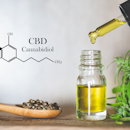
Legitimate Opioid Prescriptions
For patients in chronic pain and often acute pain, controlled substances (CS), especially opioids, are an absolute blessing. The United States Controlled Substance Act (CSA) (2016) begins with a Congressional finding and declaration that “many of the drugs included within this subchapter have a useful and legitimate medical purpose and are necessary to maintain the health and general welfare of the American people” (United States Department of Justice [USDJ] [b], 2016). Healthcare professionals, especially Registered Nurses, should be aware that controlled substances, including opioids, are important medications that can mean the difference between the enjoyment of life and merely living. However, for many Americans, they can be a curse.
Every healthcare professional must recognize that these powerful drugs have caused a social problem plaguing society and endangering many individuals. In 2015, the American Society of Addiction Medicine (ASAM) stated two million Americans - 10% of those with a substance abuse problem - “had a substance use disorder involving prescription pain relievers“(ASMA, 2016). ASAM adds, “drug overdose is the leading cause of accidental death in the US, with 52,404 lethal drug overdoses in 2015 (2016). Opioid addiction is driving this epidemic, with 20,101 overdose deaths related to prescription pain relievers” (ASAM, 2016).
Nurses and all healthcare professionals need to be alert to the illegal abuse of prescription drugs, particularly opioids. Almost as great a problem, and perhaps more so, is the potential of overreacting. In a report by ABC News Ft. Meyers, Florida, affiliate WZBN chronicled patients who were denied legitimate pain relief because their doctors and/or pharmacists were intimidated into not prescribing or not filling legitimate prescriptions for pain patients (ABC News, 2016). One incident described by ABC involved a patient – Sarah – who was in an accident 11 years ago and is still in a coma. The patient’s mother details Sarah’s suffering, saying she “screams in pain” (ABC News, 2016). Sarah's mother reported, "her arms become drawn to her chest, and her fists become tight and her legs become all twisted” (ABC News, 2016). She was taking Oxycodone for the pain until her doctor refused to prescribe anymore and told her mother she would have to see a pain specialist (ABC News, 2016). At a minimum, it was going to be a two-month wait for an appointment (ABC News, 2016).
In January 2017, Bob Tedeschi describes these contradictory problems in his article: A ‘civil war’ over painkillers rips apart the medical community — and leaves patients in fear. Real patients with real pain are left in the middle with a new problem, fear. In his article, Tedeschi emphasizes the fear patients are feeling over the potential of losing access to the only medication that works to alienate their pain (2017). These patients use the terms “terrifying”, “constant fear” and “beyond description” to describe their fear (Tedeschi, 2017).
How is a nurse, nurse practitioner, or physician to know which patient experiences are real, and which are looking to turn a profit by selling opioids on the street, in the school yard, to a friend, or just for entertainment? How is the healthcare profession able to be protected from a charge of distribution of a controlled substance without a legal prescription?
Title 21 of the Code of Federal Regulations provides a relatively simple two-prong test. Section 1306.04 lays out the purpose of the issue of a controlled substance prescription (USDJ [a], 2017). To be legal, a prescription for an opioid or any controlled substance must be:
- Issued for a legitimate medical purpose
- Issued by an individual practitioner acting in the usual course of his [or her] profession practice. (USDJ [a], 2017).
If a prescription does not meet this two-fold test, it is not a valid prescription (Food and Drug Administration [FDA], 2016). The regulations make it clear that while the prescriber is primarily responsible, there is a “corresponding responsibility” that rests with the pharmacist who fills the prescription, and any healthcare professional who knowingly assists in such an illegal distribution (FDA, 2016). Any healthcare professional, including the nurse, would be subject to the penalties provided by the law regarding the illegal distribution of controlled substances. The term knowingly includes “should have known” (Heaney, Ross & Stephenson, 1977). In a case regarding the illegal sale of Dilaudid, the court instructed the jury:
“[If you find the] defendant deliberately and consciously closed his eyes to what he had every reason to believe was the fact, such studied avoidance of positive knowledge is a circumstance from which you may reasonably draw the inference and find, in the light of the surrounding circumstances shown by the evidence in this case, that defendant knew that such purported prescriptions had not been issued for a legitimate medical purpose, and hence were knowingly filled by him (Heaney, Ross & Stephenson, 1977)."
Controlled substance laws protect the patient and healthcare professionals. Registered nurses should be aware of the laws to prevent opioid abuse in this country, yet still provide adequate pain relief for patients as needed. We must all be vigilant as to what is a legitimate prescription and act accordingly. We should all know the two-step test for what is a legitimate controlled substance prescription and act accordingly.
References
ABC News (2016). Patients in pain denied medication. ABC Fort Meyers Naples Port Charlotte. American Society of Addiction Medicine (2016). Opioid addiction. Opioid Addiction: 2016 Facts & Figures.
Food and Drug Administration (2012). Congressional findings and declarations: Controlled substances.
Heaney, Ross & Stephenson. (1977). United States v. Kershman. Leagle™. Tedeschi, B. (2017). A ‘civil war’ over painkillers rips apart the medical community and leaves patients in fear. STAT.
United States Department of Justice [a]. (2017). Part 1306-Prescriptions. Title 21 Code of Federal Regulations.




